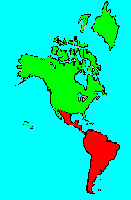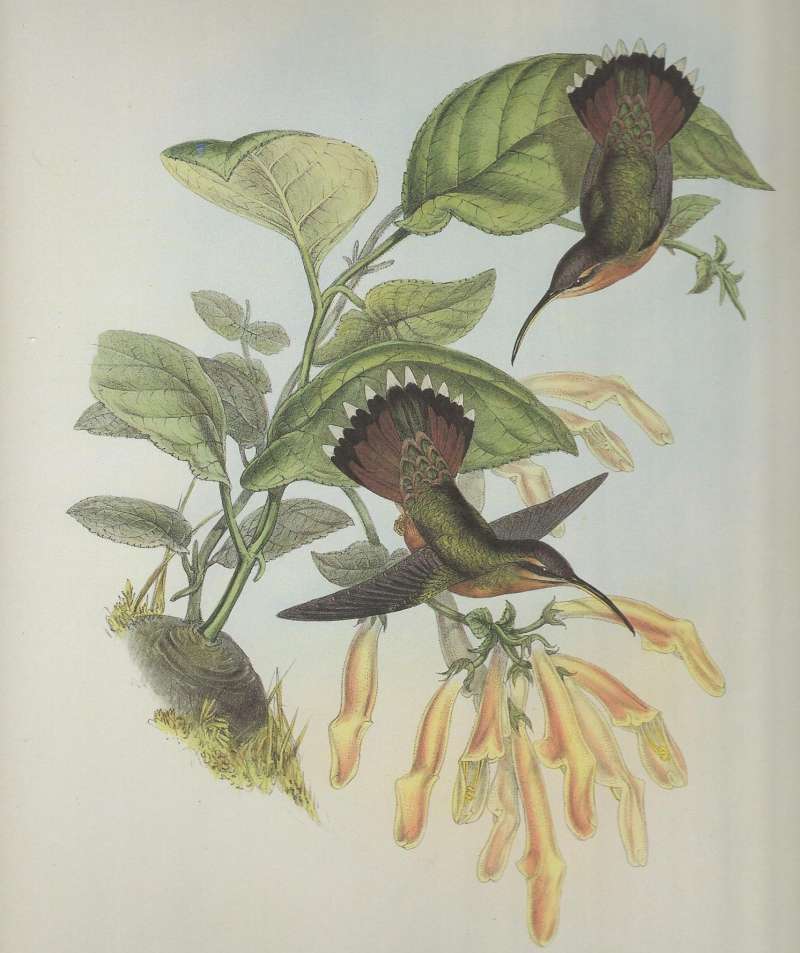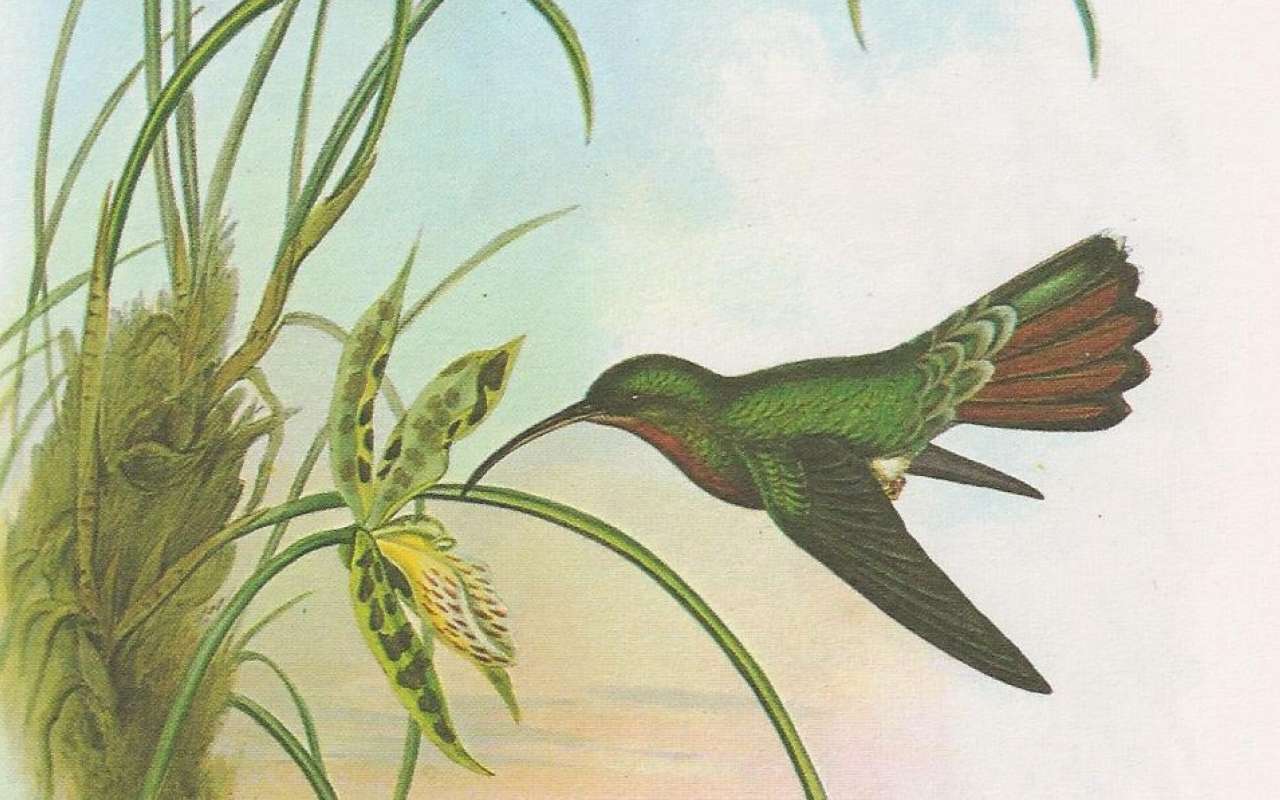SPECIES INFO
Rufous breasted hermit (Glaucis hirsuta to Glaucis hirsutus) is found from the southern Caribbean and Panama south to Bolivia and Brazil. The underside of the tail is orange-brown with black tipped feathers.The Glaucis genus contains three species of hummingbirds. The genus is found from Honduras in Central America south to Bolivia and SE Brazil. This genus was previously part of the Ramphodon genus. All three species have an orange breast and an elongated and slightly downward curving bill.
Fogden and Taylor show two species in this genus: G. aeneus and G. hirsutus. They mention G. dohrnii at the end of their excellent book.
The hermit group of hummingbirds contains just a small portion of the hummingbird family. There were about 4 genera per Monroe in 1993 and Howard and Moore in 2003 recognized 6 genera. There are about 29-30 species in this group.
Most of the species in this group have downward curving bills. Several species have fan tails with rounded feathers while other species have fan tails with feathers that end in a point.
Hummingbirds (Family Trochilidae) are a family of 319 species of small birds that are well-known for their ability to hover. Prior to 1900, millions of these birds were exported from South America (primarily Colombia) and the Caribbean for use in jewelry in Europe and England. Many of the species are very brilliantly colored.
This family is nicely represented in Costa Rica where over 50 different species have been recorded.
Swifts and Hummingbirds (Order Apodiformes) are combined into a single order. Both families have excellent flying abilities. The swifts are known for their speed, and the hummingbirds for their ability to hover.
Clements in 2007 listed 100 swifts, 4 treeswifts, and 339 hummingbirds. (Total of 443 species.)
Aves contains about 8,650 different species of living birds known to science. Each year about one new species is discovered in some remote rain forest or remote island. In addition, scientists have been raising many subspecies to full species status which may raise the species count to 10,000. Birdlife recognizes 10,027 species as of 2011.
However, each year about one species goes extinct. The rate of extinction is increasing, and the rate of new discovery is decreasing, so that the number of bird species will soon begin to decline rapidly. Although different taxonomists would organize the birds differently, there are approximately twenty-seven orders of birds. These orders are broken down into about one hundred and fifty-five different families.
Recent research of the genetic structure of some of the shore birds and owls would indicate that the present organization of orders and families should have some modification.
The birds are a worldwide group of animals that are characterized by having the front limbs modified into wings that are used for flying. Perhaps the most unique feature of the birds is the feathers. These feathers are made up of a central support called a quill and a series of small filaments that are hooked together as barbs.
For many years it was believed that Archaeopteryx discovered in Bavaria was the oldest bird from about 150 million years ago. However, in l986, Sankar Chattterjee, a Texas paleontologist, reportedly discovered a bird in the genus Protoavis that lived about 225 million years ago.
When this project was begun in 1978, we used Austin & Singer for bird taxonomy. Since then, we have adopted many changes, but have kept some older concepts that are still found widely in the literature. Recently, we have used Clements and Howard & Moore. Very recently, we have used Monroe and Sibley for the higher taxonomy of the perching birds.
Backboned Animals (Phylum Chordata) are the most advanced group of animals on earth. These animals are characterized by having a spinal cord or backbone. Most members have a clearly defined brain that controls the organism through a spinal cord. Fish, amphibians, reptiles, birds, and mammals are in this phylum.
Currently, some taxonomists believe that the fish should be divided into two groups (sharks and regular fishes) and that there are some other primitive groups in the phylum such as hagfish or lampreys.
Animal Kingdom contains numerous organisms that feed on other animals or plants. Included in the animal kingdom are the lower marine invertebrates such as sponges and corals, the jointed legged animals such as insects and spiders, and the backboned animals such as fish, amphibians, reptiles, birds, and mammals.




